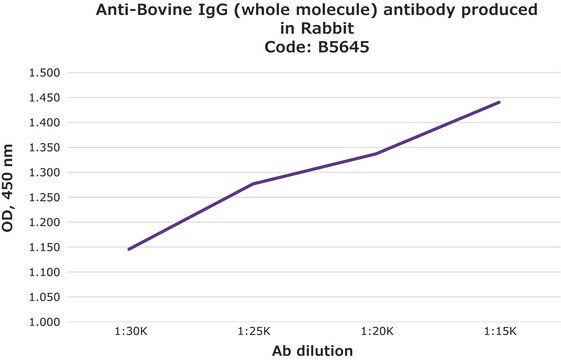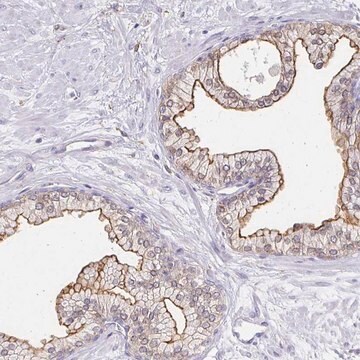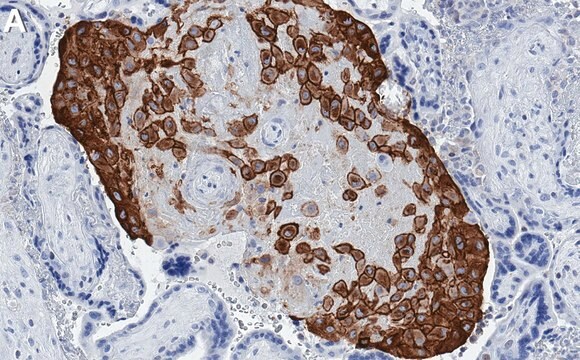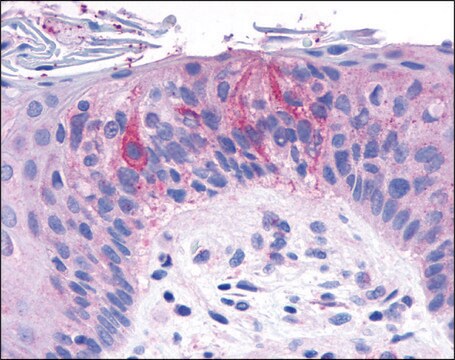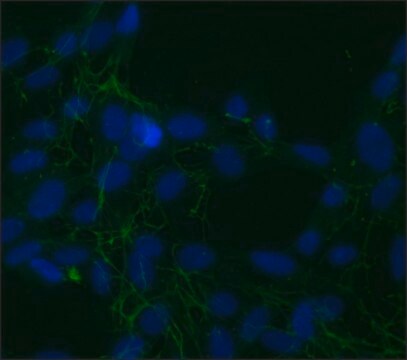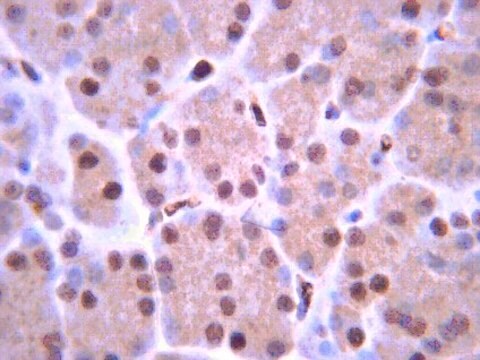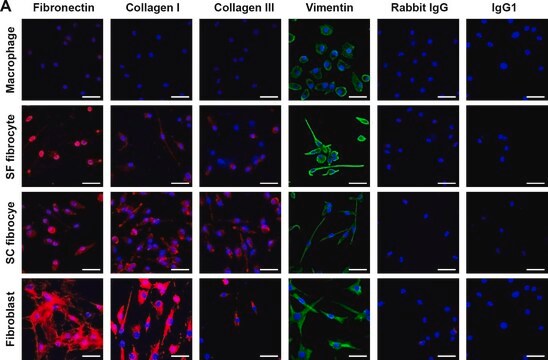推荐产品
生物源
rabbit
共軛
unconjugated
抗體表格
affinity isolated antibody
抗體產品種類
primary antibodies
無性繁殖
polyclonal
形狀
buffered aqueous solution
分子量
antigen 93 kDa
物種活性
human
濃度
~1 mg/mL
技術
ELISA: 1:10000
immunofluorescence: 1:100-1:500
western blot: 1:500-1:1000
NCBI登錄號
UniProt登錄號
運輸包裝
wet ice
儲存溫度
−20°C
目標翻譯後修改
unmodified
基因資訊
human ... TAS1R3(83756)
一般說明
Taste receptor family 1 member 3 (TAS1R3) gene encodes for sweet taste receptor T1R3 protein. T1R3 protein belongs to the family of 3 subtypes of G-protein coupled receptors (GPCRs). This protein is localized in the taste bud cells of the oral cavity. The TAS1R3 gene is mapped on the human chromosome at 1p36.33.
免疫原
The antiserum was produced against synthesized peptide derived from human TAS1R3.
Immunogen Range: 326-375
Immunogen Range: 326-375
應用
Anti-TAS1R3 antibody produced in rabbit has been used in immunohistochemistry and immunocytochemistry.
生化/生理作用
Sweet taste receptor T1R3 protein plays a role in membrane glucose sensing and regulates glucose homeostasis in endocrine cells..
特點和優勢
Evaluate our antibodies with complete peace of mind. If the antibody does not perform in your application, we will issue a full credit or replacement antibody. Learn more.
外觀
Rabbit IgG in phosphate buffered saline (without Mg2+ and Ca2+), pH 7.4, 150mM NaCl, 0.02% sodium azide and 50% glycerol.
免責聲明
Unless otherwise stated in our catalog or other company documentation accompanying the product(s), our products are intended for research use only and are not to be used for any other purpose, which includes but is not limited to, unauthorized commercial uses, in vitro diagnostic uses, ex vivo or in vivo therapeutic uses or any type of consumption or application to humans or animals.
未找到合适的产品?
试试我们的产品选型工具.
儲存類別代碼
10 - Combustible liquids
水污染物質分類(WGK)
nwg
閃點(°F)
Not applicable
閃點(°C)
Not applicable
Tas1r3, encoding a new candidate taste receptor, is allelic to the sweet responsiveness locus Sac.
Max, et al.
Nature Genetics, 28, 58-63 (2019)
Marco Tizzano et al.
Chemical senses, 40(9), 655-660 (2015-09-25)
The morphology of the vallate papillae from postmortem human samples was investigated with immunohistochemistry. Microscopically, taste buds were present along the inner wall of the papilla, and in some cases in the outer wall as well. The typical taste cell
Vladimir O Murovets et al.
PloS one, 10(6), e0130997-e0130997 (2015-06-25)
The G-protein-coupled sweet taste receptor dimer T1R2/T1R3 is expressed in taste bud cells in the oral cavity. In recent years, its involvement in membrane glucose sensing was discovered in endocrine cells regulating glucose homeostasis. We investigated importance of extraorally expressed
我们的科学家团队拥有各种研究领域经验,包括生命科学、材料科学、化学合成、色谱、分析及许多其他领域.
联系技术服务部门